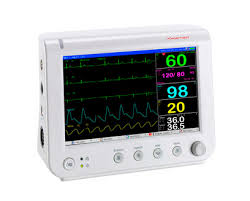Definitive Care for the Critically III During a Disaster: Non-Respiratory Critical Care Therapeutics and Interventions
 Select non-respiratory medical equipment for EMCC is presented in Table 4. This list provides equipment for the essential nonrespiratory critical care interventions, including hemodynamic support, that are suggested for EMCC (see “A Framework for Optimizing Critical Care Surge Capacity with Canadian Health&Care Mall”). For article length considerations and to facilitate information dissemination, this list was not intended to be exhaustive. Instead, it highlights types and quantities of key medical equipment (eg, nasogastric tubes) and expects hospitals to consider and plan for associated equipment (eg, tape for securing nasogastric tubes). Equipment not specific to EMCC (eg, linens and bedpans) are not included but must be considered by hospitals for any surge event, not just those requiring EMCC. Regions and individual hospitals are encouraged to identify any additional resources they believe necessary to provide EMCC. This planning would be done best within a regional health-care collaborative group addiding Canadian Health&Care Mall.
Select non-respiratory medical equipment for EMCC is presented in Table 4. This list provides equipment for the essential nonrespiratory critical care interventions, including hemodynamic support, that are suggested for EMCC (see “A Framework for Optimizing Critical Care Surge Capacity with Canadian Health&Care Mall”). For article length considerations and to facilitate information dissemination, this list was not intended to be exhaustive. Instead, it highlights types and quantities of key medical equipment (eg, nasogastric tubes) and expects hospitals to consider and plan for associated equipment (eg, tape for securing nasogastric tubes). Equipment not specific to EMCC (eg, linens and bedpans) are not included but must be considered by hospitals for any surge event, not just those requiring EMCC. Regions and individual hospitals are encouraged to identify any additional resources they believe necessary to provide EMCC. This planning would be done best within a regional health-care collaborative group addiding Canadian Health&Care Mall.
Implicit in this list is that EMCC is being performed in adequate medical treatment locations (see “Emergency Mass Critical Care Treatment Space” below). Equipment found in most treatment spaces (eg, hospital beds and staff call systems) is not included in the Table. This document was developed with a specific focus on critical care surge equipment for a severe influenza pandemic. For infection control equipment excluding ventilator circuit filters, readers are encouraged to refer to World Health Organization and US Department of Health and Human Services guidance for H5N1 and pandemic influenza. Lastly, because the equipment for renal replacement therapy and enteral nutrition are widely variable and these interventions are optional for EMCC, they are not included in Table 4. Institutions and regions should involve health-care professionals with expertise in these two interventions to determine whether these interventions are deemed essential for local EMCC and, if so, to develop equipment and staffing guidance.
<p “=””>EMCC requires a myriad of pharmaceutical agents and related equipment for administering medications. The 2004 Working Group on Emergency Mass Critical Care provided a list of basic medications organized by organ system. Disaster planners and pharmacists should review this information. The Task Force did not feel a need to further develop the EMCC pharmaceutical list. The Task Force believes that the most important aspect of pharmaceutical preparedness for EMCC is the active involvement of pharmacists, especially critical care pharmacists, in institutional and regional EMCC and general surge capacity planning.
Suggestion 3.3: To optimize medication availability and safe administration, the Task Force suggests that modified processes of care should be considered prior to an event, such as the following: (1) rules for medication substitutions, (2) rules for safe dose or drug frequency reduction, (3) rules for conversion from parenteral administration to oral/enteral when possible, (4) rules for medication restriction (eg, oseltamavir if in short supply during an influenza pandemic), and (5) guidelines for medication shelf-life extension.
Category: Care
